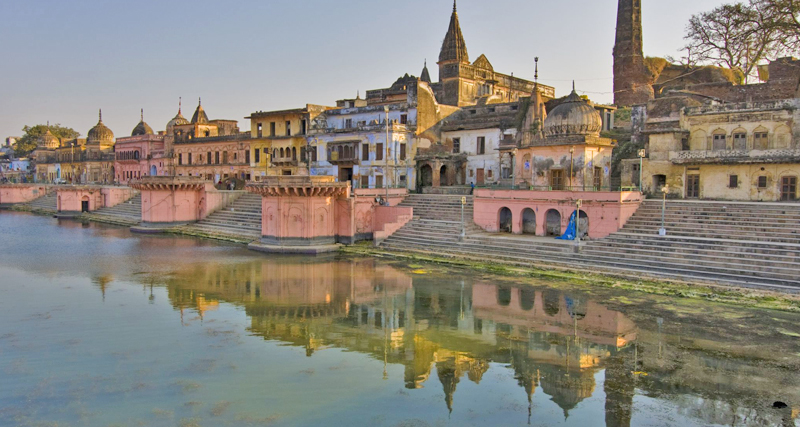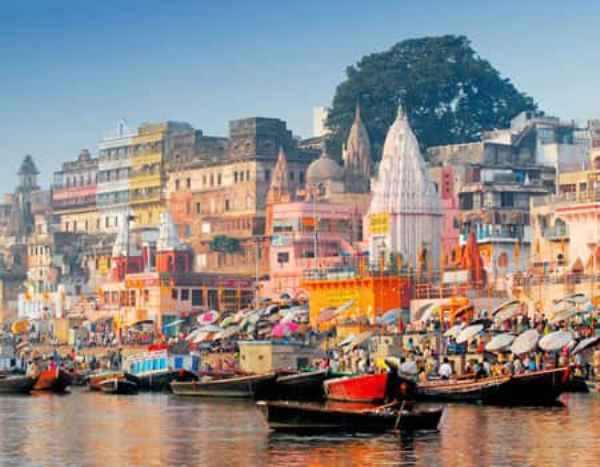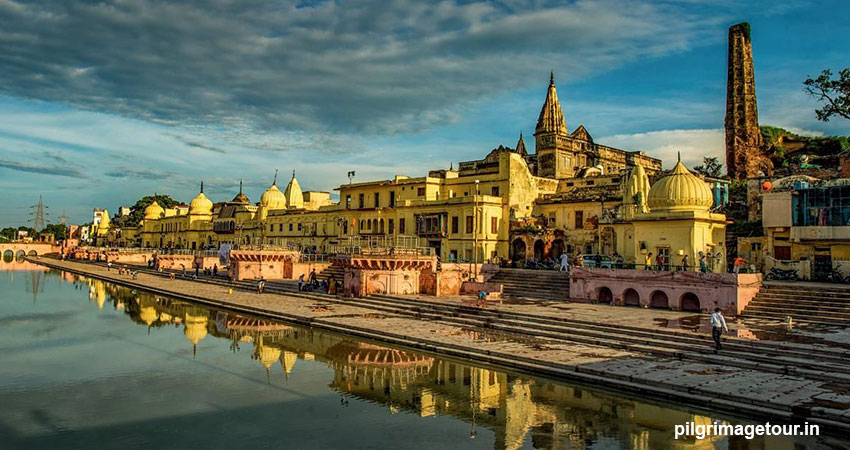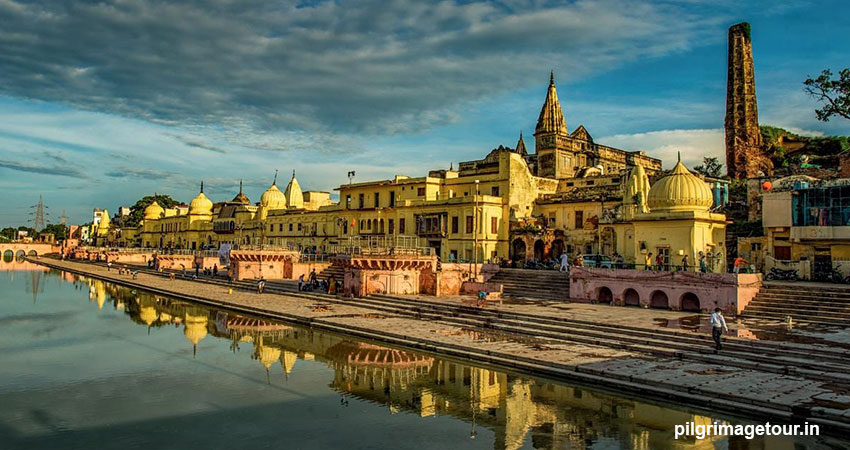Triveni Sangam, one of Central India's holiest sites, is roughly 7 kilometers from Civil Lines in Allahabad (Prayagraj). It is the confluence of three rivers: the Ganga, the Yamuna, and the Saraswati (which is a mythical river, supposed to have dried up more than 4,000 years ago). It is one of the locations where the Kumbh Mela, which occurs every 12 years, is hosted. The Panchanga, or Hindu calendar, is used to identify the precise day of the Mela.
In Indian mythology, the three rivers Ganga, Yamuna, and Saraswati are all respected rivers, and the confluence location of these rivers is of great religious significance. Taking a bath in the sacred Triveni Sangam is said to wash away all sins and release you from the cycle of rebirth, according to Hindu mythology. Furthermore, the Sangam is a lovely and serene spot to visit. The scene of the brownish Ganga meeting the slightly greenish Yamuna is breathtaking.
You may see the variation in water colors between the Ganga and the Yamuna if you take a boat trip along their softly flowing waters. At the Sangam, there are also temporary wooden banks. As a result, devotees who like to bathe can do so directly at the confluence site. The water in the Triveni Sangam is clean enough for a bath, especially in the winter, and it's also not too deep, so it's nice to take a plunge.
Kumbh Mela at Triveni Sangam
Because of the religious importance of the site, the Kumbh Mela that takes place at Triveni Sangam is on a whole other level, drawing tens of thousands of devotees from all across the country. During the grand Kumbh Mela, which takes place every twelve years, millions of these believers willingly leave behind all the delights of a privileged life to take a bath at this sacred confluence.
A bath in these pristine waters is thought to boost the purification of the bather by a hundredfold. When this holy bath is taken at the unique periods set aside for spiritual bathing at the Kumbh Mela, the effect is multiplied by a thousand. Thousands of devotees come to the Kumbh Mela for reasons other than cleansing; they offer pind to their ancestors who have passed away and have poojas conducted for their prosperity and well-being.
The Kumbh Mela attracts people from all over the world who are attracted by India's culture and customs and have the opportunity to experience these processions in all their splendor.
Religious Significance of Triveni Ghat
The Triveni Sangam is a very sacred site, and there are many legends surrounding it. Saraswati meets Ganga and Yamuna in Prayaga, the ancient name for Allahabad, according to sacred texts. The Saraswati River is also thought to flow beneath the surface.
Triveni Sangam is named after the location where the three holy rivers meet, as well as the legendary belief that drips of nectar, which may change humans into immortals, landed on this site on the earth during the war between the Gods and the demons. This gives Allahabad the title of Tirthraja, or King of Holy Places, and it is for this reason that the Kumbh Mela is held here. According to legend, Lord Brahma performed the Prakrista Yajna here, and Lord Rama visited Allahabad during his exile.
A bath in the holy waters is also thought to help in cleansing and possibly liberate the individual from the never-ending cycle of birth and reincarnation. A large number of pundits sit along the river's edge, performing various Poojas for the families' well-being and wealth. Many people come to the Sangam to have their loved ones' mortal remains immersed.
Things to Do at Triveni Sangam
The Triveni Sangam is as famous for sightseeing as it is for performing various poojas. Platforms have been constructed in the middle of the Sangam where one can perform poojas like Shraddh and Narayan Nagbali. Many Puranas and Kathas are also narrated here. The confluence offers breathtaking views not only of the merging waters but also of the Allahabad Fort that had been constructed by Akbar, the New Yamuna Bridge and white birds floating happily on the water.
Tips for visiting Triveni Ghat
1. When speaking with the pandits here, like with other religious locations in India, one must use utmost caution. If you're coming for religious poojas, make sure to ask the pundits how much they'll charge you before asking them to do anything for you; otherwise, they'll almost likely give you an excessively high price after the pooja. Keep in mind that negotiating is really intense; if they charge 1,000 for something, you might be able to have it done for 100.
2. If you are not here for religious reasons and simply want to visit the confluence site for fun, be very clear with the pandits and keep as far away from them as possible while remaining courteous. Because the commentators here are admired and frequently join up with the boatmen, if you are impolite to them, you may find yourself fighting with everyone else. For the same reason, many boatmen who transport you to the Sangam may try to get you to perform some sort of pooja - unless you really want to, make very clear that you don't want any religious ceremonies performed at all.
3. Bargaining for boating will begin with a ridiculous cost - say, 2,000 for a 1- hour boat ride - but if you bargain hard enough, you should be able to lease a complete boat for a round-trip cruise to Sangam for less than 500.
How to Reach Triveni Sangam
All modes of transportation are well connected across the major metropolis. The most convenient option is to get an Ola cab to transport you to the banks of Sangam, where you may board a boat or ferry. Alternatively, you can take a tempo/auto-rickshaw to get there.
You may charter a whole boat for a return journey to the Sangam region from the banks (bearing in mind that you'll have to haggle hard - a complete boat ride should cost no more than Rs 400 for the return journey during off-peak season).
Location : Prayag, Allahabad, Uttarpradesh
Time Required : 2-4 hrs
Entry Fee : No Fee required








 +91-7303039611
+91-7303039611